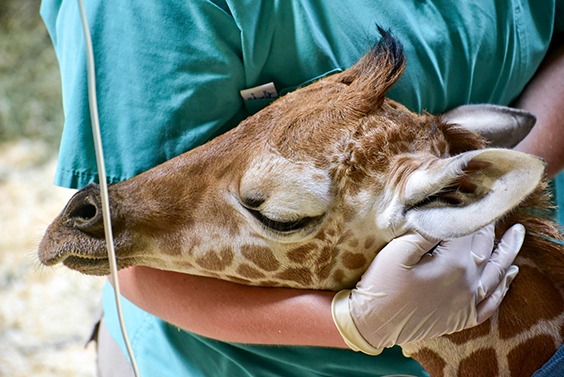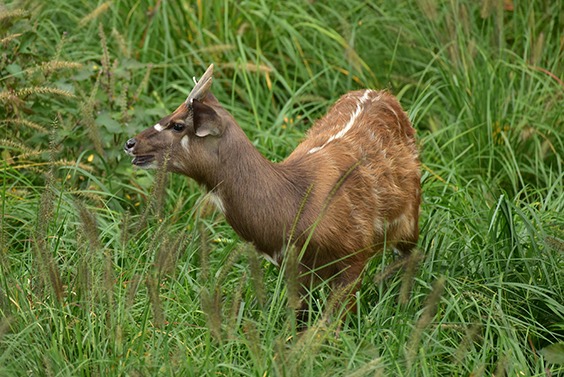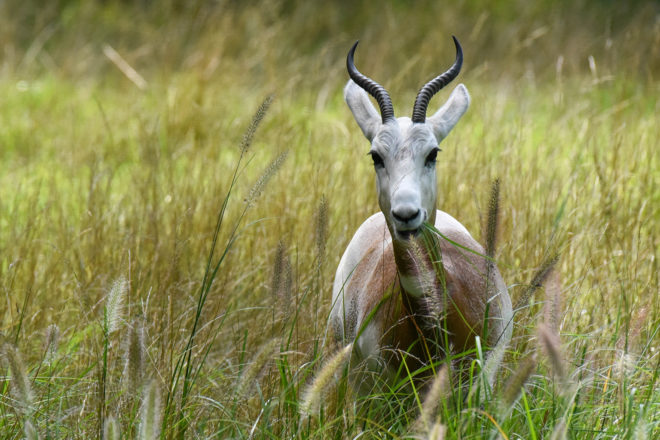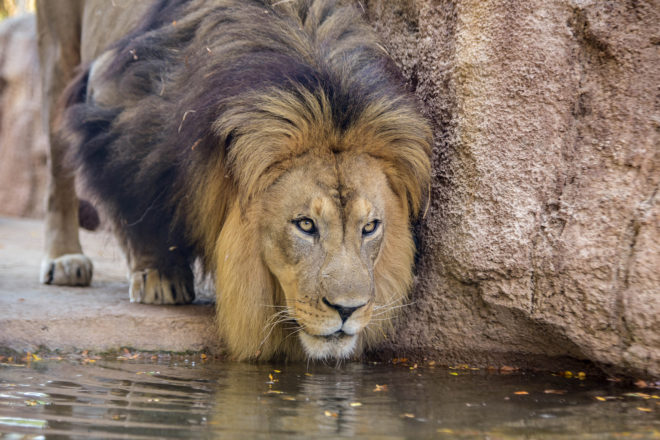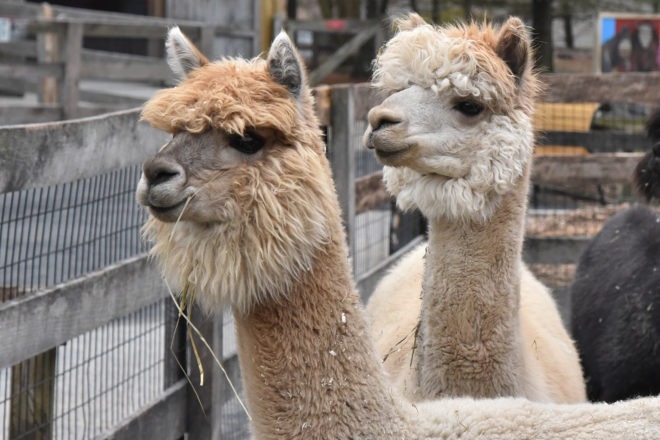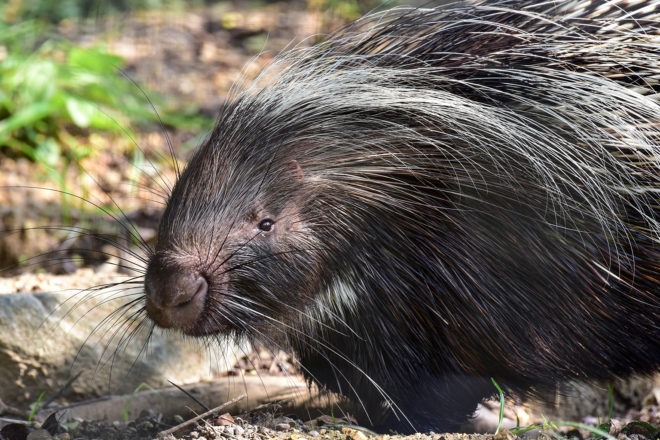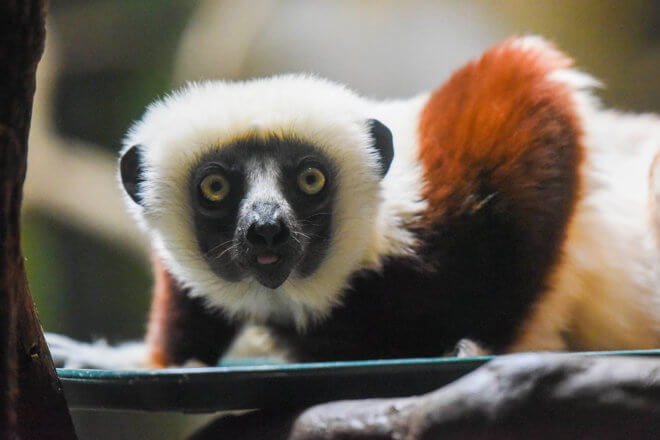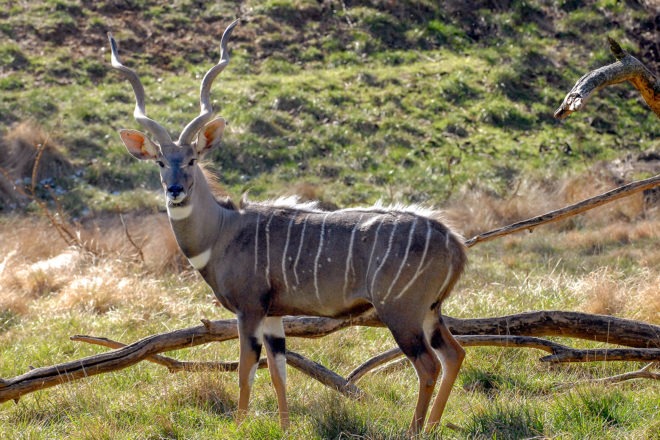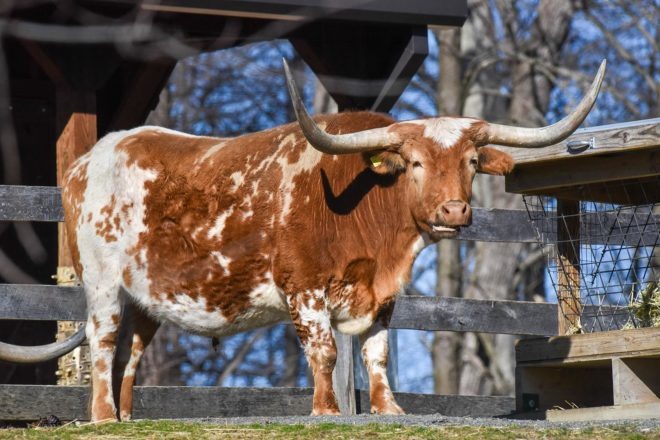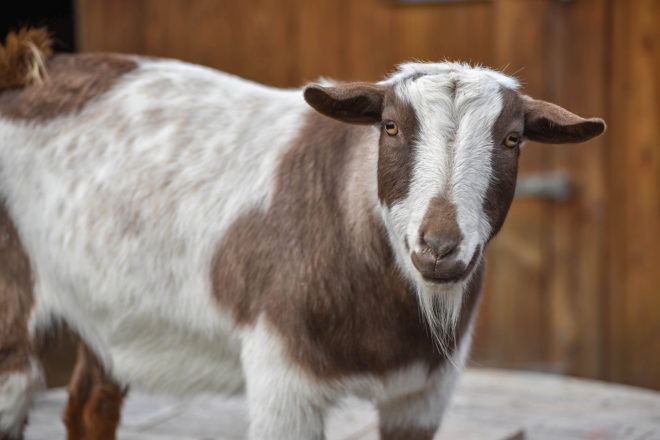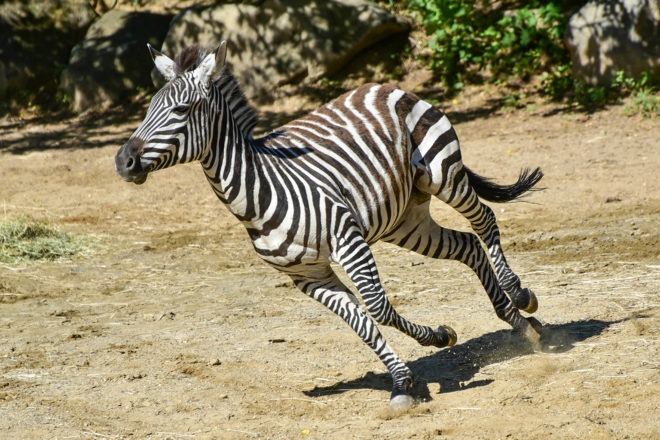Off Exhibit: Julius’ Story
In June of this year, the Zoo welcomed its second giraffe calf in less than a few months. The excitement of Kesi’s first calf, however, was quickly replaced with concern as it was clear from the beginning that this giraffe newborn was in need of help. For four very intense weeks, the animal care and veterinary teams at the Maryland Zoo worked tirelessly ...
New at the Zoo
The Maryland Zoo in Baltimore is pleased to announce two new additions to the African Journey area of the Zoo — 14-month-old male sitatunga Jabari and 2.5-year-old warthog Hodor. Jabari was born at the Mesker Park Zoo in Evansville, Indiana. He was transferred to The Maryland Zoo in August as a recommendation from the Association of Zoos and Aquariums ...
Addra Gazelle
Addra gazelles live in Africa’s Sahara desert region, from Mauritania to Sudan. They move seasonally from scrub land during the dry season to desert during the wet season. See the Addra Gazelle on exhibit in the African Journey area of The Maryland Zoo. Addra gazelles have adapted well to their harsh and arid habitat. They browse and graze mainly on ...
African Lion
Lions mostly prowl Africa’s plains and savannas, although they can adapt to many habitat types, including thorn scrub and even desert fringes. Lions are not exclusive to Africa. There are both African and Asian lions. A small population of lions lives in the forested regions of northwest India – a remnant of the lion’s former domain that once ...
Alpaca
Alpacas are the smallest of the domesticated camelid species. They have slender bodies, long and shaggy necks, and camel-like faces. Huacaya (Wa-kee-a) alpacas have dense, crimped fleece while Suri (Sur-ee) alpacas have fine, lustrous fleece that grows in long locks. About 90% of all alpacas in North America are Huacaya, including those at the Zoo. See ...
Cape Porcupine
Cape porcupines, also called South African porcupines, are common throughout central and southern Africa. They are highly adaptable and can survive just about anywhere that vegetation is available. They are more likely to be found in open rather than wooded areas, though, and seek out rocky crevices and caves for shelter. Porcupines are large rodents ...
Colobus Monkey
Black and White Colobus Monkeys live in all types of forest of equatorial Africa. You can see Colobus monkeys on exhibit at The Maryland Zoo in the Chimpanzee Forest. Colobus monkeys share the trees with each other and other species of monkey. Like all primates, they are highly social animals. They live in family groups composed of a dominant male, ...
Coquerel’s Sifaka
Coquerel’s sifaka are one of very few species of sifaka. All sifaka are lemurs, and all lemurs are prosimian primates — which, in a nutshell, means primates more primitive than monkeys — that are native only to the island of Madagascar off the southeastern coast of Africa. Coquerel’s sifaka live in the sparse remaining dry, deciduous forests of ...
Lesser Kudu
Lesser kudu live in dry, densely thicketed scrub and woodlands of northern east Africa. To see them at the Maryland Zoo, walk along the African Journey Boardwalk. Females tend to live in small groups of two or three, plus their offspring. Adult males, called bulls, are generally solitary. They leave their mothers after 1.5 to 2 years to be on their ...
Miniature Texas Longhorn
Miniature Texas longhorns are small Texas longhorns, as their name suggests. They are smaller in size but otherwise retain the characteristics and proportions of full-sized Texas longhorn cattle. Miniature longhorn bulls can stand no more than 48 inches tall at the highest point of the hips, or withers. Miniature longhorn cows can measure no more than ...
Nigerian Dwarf Goat
The Nigerian dwarf goat is a miniature dairy goat of West African origin. They are similar in appearance to larger dairy goats but ideally, the does stand no taller than 17 to 19 inches and the bucks stand no taller than 19 to 20 inches. The coat can vary considerably by color and pattern. Ideal weight is about 75 pounds. Now a domesticated breed, ...
Plains Zebra
There are four species of zebra: Plains, Grevy’s, Cape Mountain, and Hartmann’s Mountain. The Plains Zebra, on exhibit at The Maryland Zoo, is the most common and geographically widespread. It is also known as the Common Zebra or Burchell’s Zebra. Plains Zebras roam Africa’s grasslands and venture into woodland and marshy areas as well. Check ...

